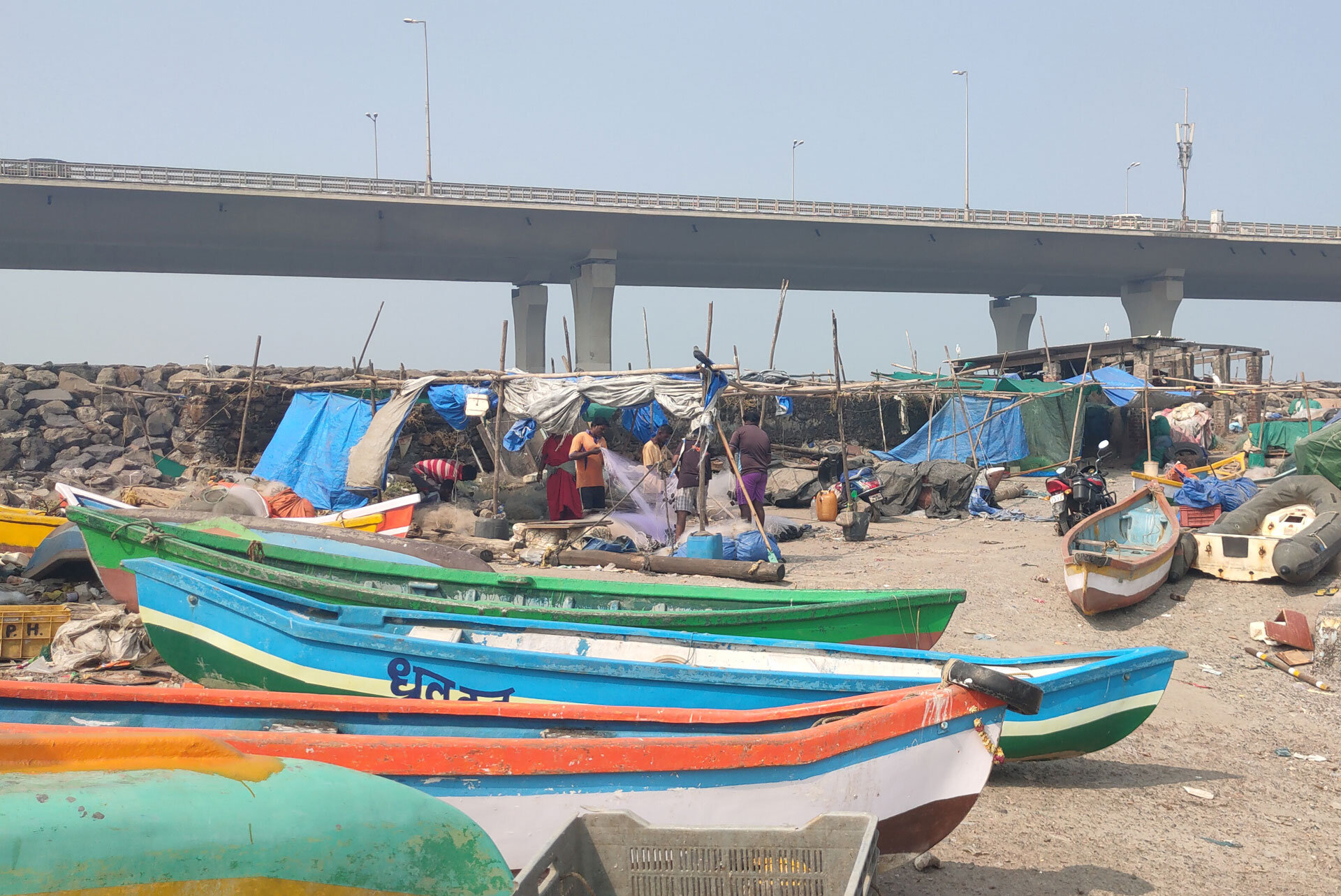
P. Pallavi, D. Parthasarathy + Arun Inamdar| Indian Institute of Technology (IIT)Abstract
This project examines the ways in which the residents of Mahul and Mahim are made vulnerable to the impacts of climate change. Because social and ecological systems pressure and transform each other, the project focuses on the two local coastal socio-ecological systems (SES) of Mahul and Mahim in Mumbai. In so doing, it integrates understandings of the relationships between society and ecology at a local scale to generate a comprehensive understanding of vulnerability and adaptation by marginalized populations in the city as they confront climate change on Mumbai’s eastern and western coastlines.
Project Proposal
Mumbai is a coastal city which has high population density and continuous demand for development is exerting pressure on the coastal ecosystem. The installed sewage treatment capacity is not enough for the amount of effluents produced from various sectors (which includes sewage from informal settlements) hence releasing untreated sewage into the sea. This results in degradation of coastal water quality and disturbs the ecology. Water quality is also influenced by climatic factors, such as water temperature, precipitation and occurrence of extreme events which determines the nutrient cycling of the coastal waters. More intense rainfall and flooding could result in increased loads of suspended solids, E. coli and other nutrients while hotter summers and lower rainfall could increase the risk of deoxygenation (Kundzewicz et al., 2010). With continuous sewage input from the land and degradation of water quality, climate change may act against self-purification of coastal waters and restoration and of ecosystem status (Orr et al, 2006). So both, the climatic and non-climatic factors (untreated sewage and effluents from land) is exerting pressure on the coastal waters and these phenomenon will vary at local and regional level.
The vulnerabilities arising from climate change with reduced or erased adaptive capacity from degradation of coastal ecosystem will have different impacts on different communities. The work majorly focuses on two areas - Mahul in east and Mahim in west coast of Mumbai. Both the coastal waters are heavily polluted throughout year. Mahim bay is the meeting point between Mithi River and Arabian Sea which is a non-point source of pollution. Mahim is also neighbor to one of the biggest informal settlements of Mumbai i.e., Dharavi. Mahul is surrounded by three refineries and sixteen chemical factories. In 2013 October an accidental oil spill in coastal water killed mangrove forests in Mahul and reduced fishermen’s income to 50%. Many health issues have been reported in Mahul due to polluted environment. While assessing the vulnerability of communities, the role of ecosystems cannot be separated from their social and economic dimensions since they are all mutually dependent on each other. This concept of mutuality allows for a better understanding of how humans create their vulnerability.
Assessment of socio-ecological vulnerability will be in two phases. First phase will be assessing the vulnerability of ecosystem by understanding the geo-physical and chemical parameters. Parameters like DO, BOD, pH, temperature, turbidity, oil and grease, Chlorophyll a, Dissolved Organic Carbon (DOC), Sea Surface Temperatures along with LULC will indicate the health of ecosystem and how development has encroached mangroves, wetland and salt pans. Second phase will look into the social dimension to understand how different stake holders rank the different ecosystem services and how different communities are impacted differently (or not). We will try to understand how degradation of coastal ecosystem might add up to the vulnerability of communities which are already exposed to uncertain extreme events and hazards.




